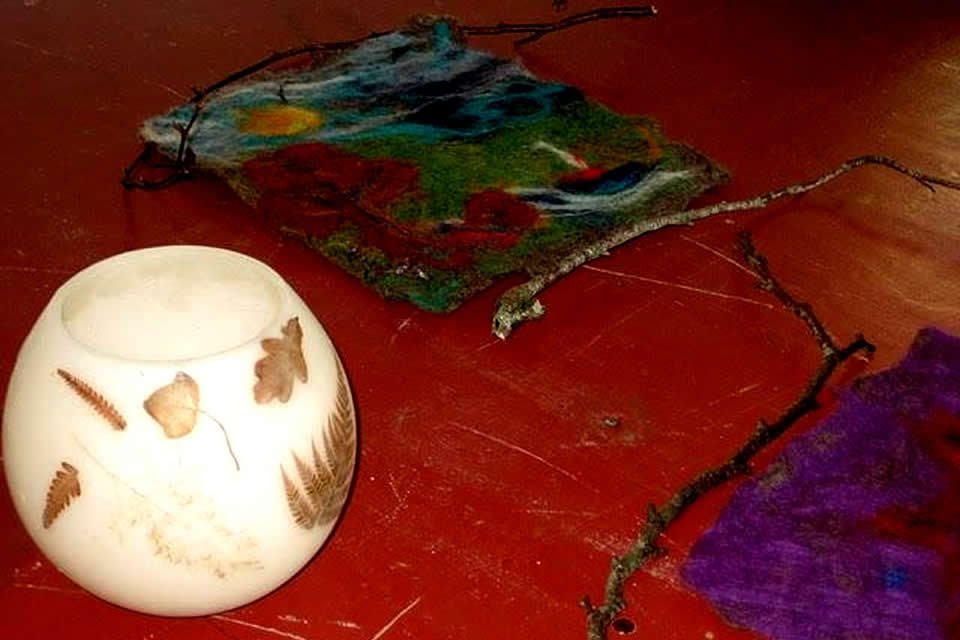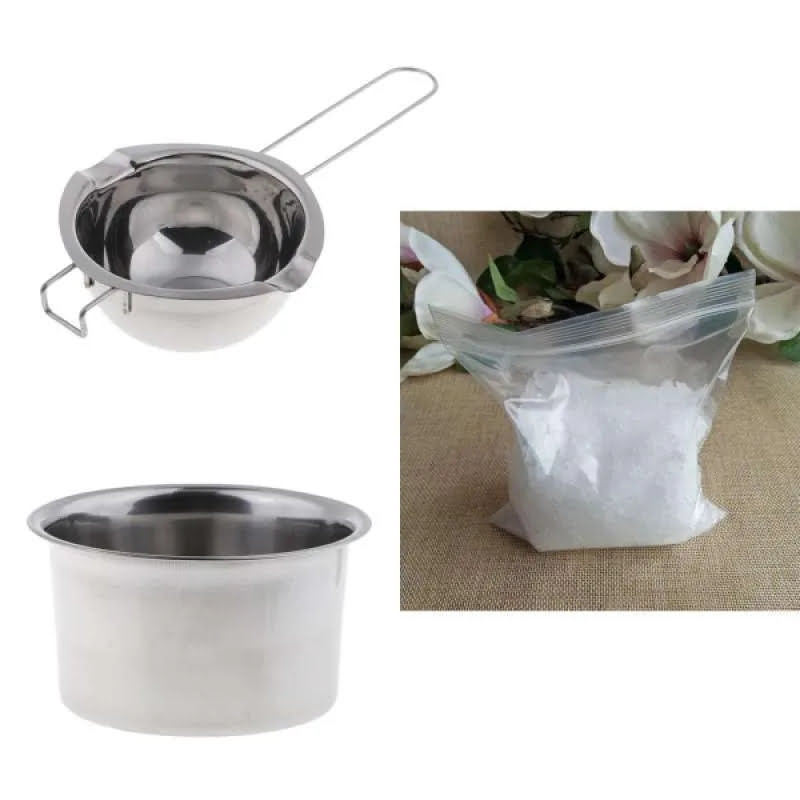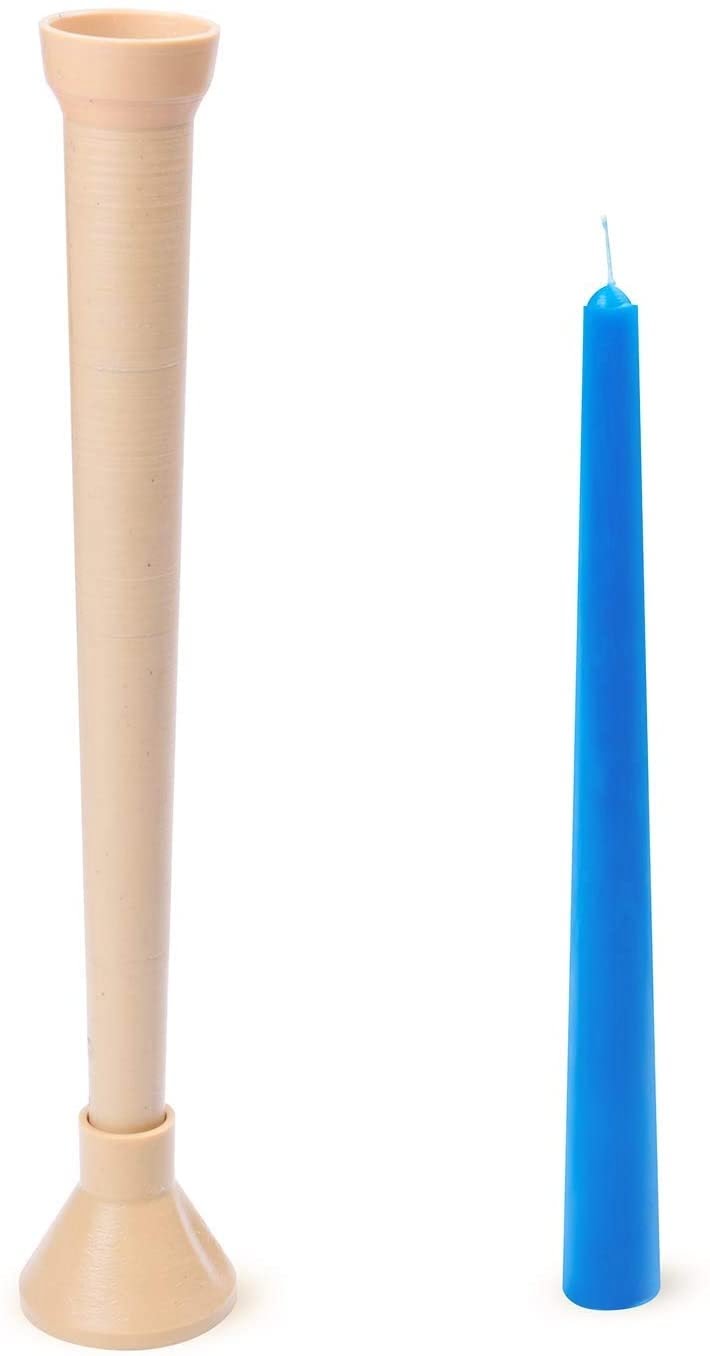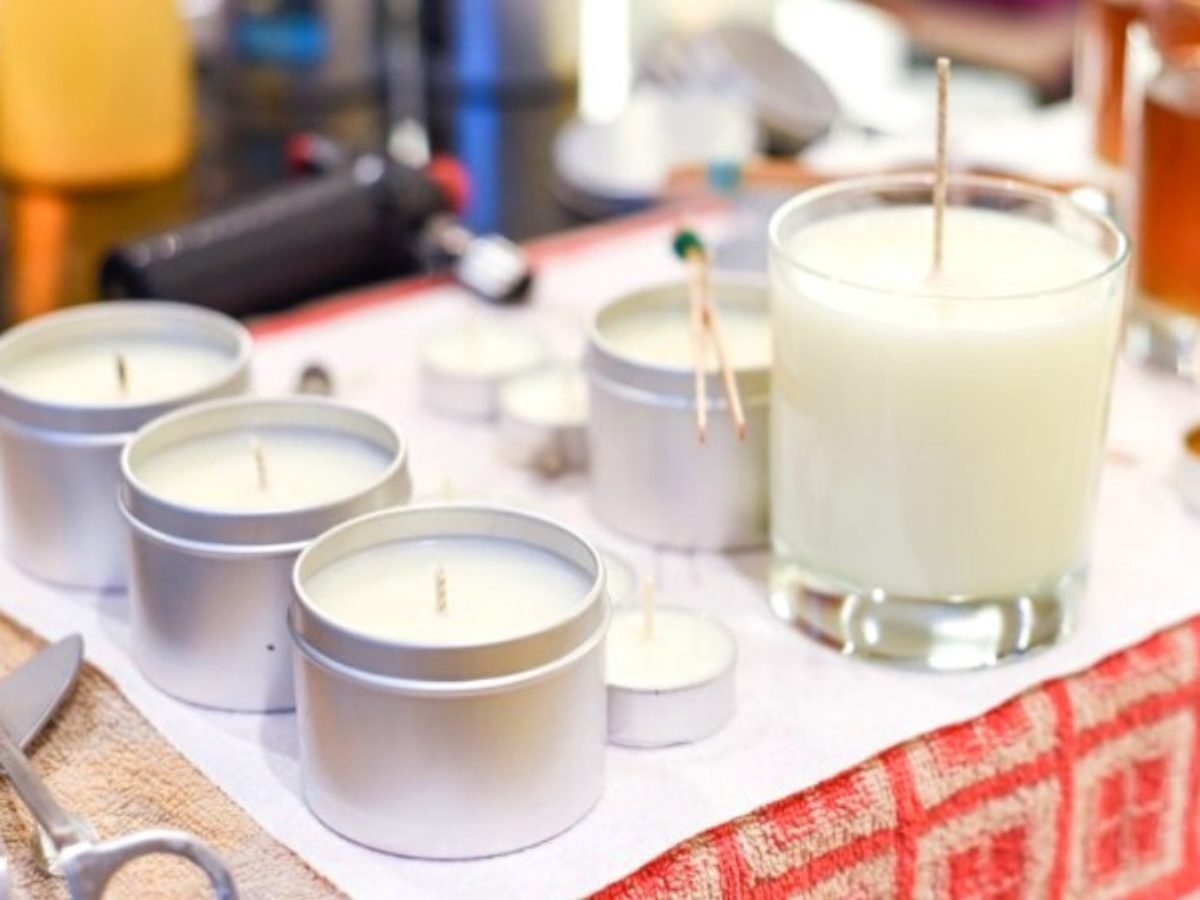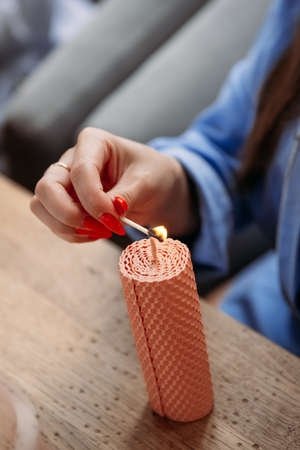If your candles are cracking around the wick, there are several reasons why. In this article I’ll talk about Tunneling, Too much fragrance, and air trapped in the wax. Here are some tips for preventing cracks around your wick. I’ll also show you how to prevent air bubbles and air pockets from forming. But first, what’s cracking around the wick? And how do you prevent it?
Proper wick size
The wick size of your candle has many variables, including the size of the container and the fragrance load. The diameter of the container is the most important determining factor for the wick size. However, different types of waxes have different melting points, so the wick size can also vary. For example, a dense wax may require a larger wick than a lighter, airy wax. Another factor to consider is how much fragrance oil and color you are adding. A highly scented candle, or a colorful one, will require a large wick to avoid cracking around the wick.
If you’re having a hard time determining which wick size is correct for your candle, you may want to experiment with lower-percentage fragrance oil. Fragrance oil can affect the overall scent throw of your candle, so be sure to read the wax label for the recommended fragrance oil load. Make sure that you stick to the recommended fragrance oil load to avoid clogging or cracking around the wick.
Another common problem with a small wick is the failure of the wick to create a proper melt pool and can cause a candle to flicker. In addition, a wick that’s too big for your container may also produce a large flame. You can easily fix this issue by trimming the wick after each use. Besides that, a small wick will prevent mushrooming in your candle, which can leave it with a dull, dirty appearance.
If you’re looking for a wick size that works well for you, try using a test wick to find out what works best for your specific container. Testing and tweaking is a critical part of making a quality candle product. If you’re using the right size wick, you’ll be able to create beautiful candles that smell great and are free of unnecessary toxins.
Tunneling
If you have tunneling around your wick when you’re making candles, don’t worry! Tunneling is an inevitable result of the process of melting the wax around the wick. There are a few things you can do to fix this problem. First of all, make sure the candle is fully melted. Tunneling will occur when the entire top surface of the wax melts. The best way to find out how long it’s taken to melt is to measure its diameter in inches. For example, if your candle is 3 inches in diameter, you’ll want to burn it for three hours.
One of the easiest ways to prevent tunneling is to allow the candle to burn properly. You should not place your candle near a drafty window or fan, because the cold air can put out the flame accidentally. While you’re at it, make sure you place the candle on an even surface and in a place where it can’t get too hot or cold. Tunneling is a problem that can be solved, so don’t worry!
One way to prevent tunneling is to scrape away the excess wax with a knife. While this method works, it’s not very effective. Another method is to wrap your candle with aluminum foil. This will allow the heat to escape from the candle while giving the flame sufficient oxygen. Then, when you’re done with the candle, you’ll be able to see the tunneling on the top surface and prevent it.
Sometimes, tunneling occurs due to short wicks. If your wick is too short, you can easily remove it by digging it out with tweezers. But be careful not to cut the wick, or it may worsen the problem. Alternatively, you can use a heat gun to melt all the wax from the surface of the candle. Then, make sure to let it cool completely before reusing it.
Too much fragrance
A high fragrance load may be the culprit behind cracking around the wick of your candle. A high fragrance load may result in the burning of excess oil, creating a thick, dark smoke. Most fragrances only require a minimum fragrance load of six to eight percent, and more often than not, they are not necessary. If you do find that your candles are getting cracked around the wick, try reducing the fragrance load or changing wick series.
To prevent this from happening, use only a small amount of fragrance oil. Candles with a large diameter may take four or five hours to burn. If you don’t wait until the melt pool reaches the rim of the container before blowing out the candle, it could cause tunneling. The size of the wick used for a candle depends on how much fragrance oil you add and how much dye you use.
Too much fragrance in the wax is also a culprit of cracking around the wick. Excessive fragrance oil will make your candles thick and heavy, so you should limit the amount of fragrance oil. To prevent cracking around the wick, you can add fragrance oil by weight before pouring the wax into a mold. Also, a lower melt point will result in a bigger melt pool and allow the fragrance to release without compromising the candle’s burn quality.
When pouring the wax into your containers, pour it slowly to prevent air from forming in the container. This will help the wax cool more evenly. A small amount of air will also reduce the cracking around the wick, so you should experiment with the temperature until you find the correct one. A good starting point is about five degrees above room temperature, but experimentation will yield more results. This will ensure that the candles will cool evenly and minimize imperfections.
Air trapped in wax
If you notice that the candle is popping and crackling around the wick, you may have a problem. If so, there are several ways to fix the problem. First of all, try to heat up the candle wax to the correct temperature. If it’s below that temperature, it could contain moisture. When it reaches this temperature, the air trapped in the wax will escape. In addition, heat helps the candle to release trapped moisture.
A second way to solve the problem is to use a heat gun to melt the surface of the candle. This will fill the holes and cracks. Once the wax has melted, tap the surface of the candle to remove any trapped air bubbles. This should prevent the cracking of the candle. But you should be sure to use a thermometer to measure the temperature of the wax, or else you will end up with a mess.
Another way to fix the problem is to use more wax. If the candle’s surface is uneven, the wick may be off-centered. To prevent this, you should avoid lighting it near drafts or vents, because air bubbles can occur in both. As a result, the candle won’t burn evenly and may result in soot and cracking. Regardless of the cause, you should never leave a candle unattended.
The wick is usually exposed to water. Water can also cause cracking in the wax. If there’s any water in the wax, you should try to remove it from the candle before it’s set. This is a difficult task in humid environments, so use a dehumidifier to keep your candle dry. After this, you can enjoy the scent of the candle. A great way to avoid cracking in candle wax is to use a dehumidifier.
Adding too much fragrance oil
One of the most common mistakes that many people make is to add too much fragrance oil to a candle. When you do this, you are essentially trapping the fragrance oil within the wax and causing cracking around the wick. Besides being unsightly, this can also lead to the candle wax becoming too hot, and the fragrance oil sinking to the bottom. It’s important to keep these two mistakes in mind when making candles.
Too much fragrance oil can also cause your candles to have a fuel-burning smell. To combat this, try using a lighter fragrance or a smaller wick size. Either way, you should make sure that the wick is the right size. If it is too small, you should trim it down to 1/4 inch before pouring. Too much fragrance oil will drown out the flame and cause cracking around the wick.
Another common problem that can cause a cracking top in a candle is too much fragrance oil. You should try reducing the amount of fragrance oil or switching fragrances if the cracking problem persists. If you’re experiencing cracking around the wick, the problem is most likely the fragrance or essential oil that you’re using. Essential oils and fragrance are notorious for cracking the top of a candle. They can cause cracking around the wick, and can cause your candle to be lumpy and unattractive.
Another common cause of cracking around the wick is adding too much fragrance oil. When you add too much fragrance oil to your candles, you aerate the wax, which can affect the quality of burn and appearance of the candle. You may also need to adjust the temperature of your wax when pouring it into the container. You may have to make more than one pour in order to achieve a smooth surface. If you’re having trouble with this, consider using a heat gun to melt the wax in the container before pouring it into the wick.
Candles are often lit in celebration, and during moments of contemplation. Whether you are lighting a candle to celebrate a holiday, to commemorate a life event, or to simply relax in a moment of peace, it is important to have a well-working candle. One common problem with candles is that the wax can crack around the wick. This problem can be caused by a number of factors, but there are a few ways to help prevent it.
The most important factor in preventing wax cracking is to make sure the wick is the correct size for the candle. If the wick is too small, it will not be able to provide enough heat to the wax, and the wax will crack. If the wick is too large, it will create a large flame that can cause the wax to crack. It is important to find the right size wick for your candle.
In addition to making sure the wick is the right size, it is important to make sure the candle is the right temperature. If the candle is too hot, the wax will crack. If the candle is too cold, the wax will also crack. It is important to find the right temperature for your candle.
Another factor that can cause wax cracking is the type of wax used in the candle. Some types of wax are more prone to cracking than others. It is important to use a wax that is suited for your candle.
Finally, the environment in which the candle is burned can also cause wax cracking. If the candle is burned in a draft, the wax will crack. If the candle is burned in a hot environment, the wax will crack. It is important to find the right environment for your candle.
There are a few ways to help prevent wax cracking around the wick. The most important factor is to make sure the wick is the correct size for the candle, and that the candle is the right temperature. In addition, it is important to use a wax that is suited for your candle, and to burn the candle in the right environment.
What Does Cent Throw Mean In Candle Making
In the art of candle making, “cent throw” is a term used to describe the distance a molten wax droplet will travel after being ejected from a heated wick. This measurement is important for candlemakers as they must consider how far the molten wax will travel when designing their candle’s wick. If the droplet is too large, it may fall off the wick and onto the candle’s surface, potentially causing the candle to flicker or go out. If the droplet is too small, it may not travel far enough to be drawn back up into the wick, resulting in a diminished flame. By understanding the cent throw of their wax, candlemakers can create wicks that produce a consistent, reliable flame.
Sand Candle Making Techniques Videos
Candle making is an art form that has been around for centuries. In fact, the first candles were made from animal fats. Today, we have a variety of different types of candles to choose from, including sand candles.
Sand candles are made by pouring a layer of sand into a mold, adding a layer of wax, and then repeating the process until the candle is the desired height. The finished candle is usually decorated with shells, beads, or other small objects.
There are several different techniques for making sand candles. In the simplest technique, you can just pour the sand and wax into the mold and let it dry. However, this method usually results in a candle that is not very sturdy and may not burn evenly.
A better technique is to use a double boiler to melt the wax. This will help ensure that the wax is melted evenly and will prevent the wax from burning the sand. You can also add scent or color to the wax to create a more decorative candle.
Once the wax is melted, you can pour it into the mold. Be sure to pour the wax slowly so that it does not disturb the sand. You may also want to use a spoon or other tool to help spread the wax evenly.
If you want to add shells or other objects to the candle, now is the time to do it. Simply press the objects into the sand and wax before it dries.
Once the wax has hardened, you can remove the candle from the mold. If the candle is decorated with shells or other objects, you may need to use a sharp knife to cut them free.
Be sure to trim the wick to about 1/4 inch before lighting the candle. The wick should be trimmed every time the candle is lit.
Now that you know how to make a sand candle, try it yourself and see how easy it is!
What Themotor For Candle Making
A candle is lit at the wick, where heat is then used to produce light. The heat of the flame melts the wax around the wick, vaporizing the liquid wax. Vaporized molecules are then drawn up into the flame, where they react with the oxygen in the air to create heat, light, water vapor, and carbon dioxide.
The type of wax and the type of wick both affect the flame of a candle. The most important factor in the flame of a candle is the oxygen supply. If the flame is too small, the wax will not vaporize completely and the candle will not burn properly. If the flame is too large, the candle will be consumed too quickly.
There are several different types of wax that are used in candles. The most common types of wax are beeswax, paraffin wax, and soy wax. Beeswax is a natural wax that is made by honey bees. Paraffin wax is a petroleum-based wax that is made from crude oil. Soy wax is a vegetable-based wax that is made from soybeans.
There are several different types of wicks that are used in candles. The most common types of wicks are cotton wicks, paper wicks, and soy wicks. Cotton wicks are made from cotton fibers. Paper wicks are made from paper fibers. Soy wicks are made from soy fibers.
Candle Making Class Singapore
Candle making is a fun, creative and therapeutic activity that can be enjoyed by people of all ages. It is a great way to relax and de-stress, and can be a fun activity to do with friends or family.
Candle making is also a great way to express your creativity, and to create unique and beautiful candles that can be used to decorate your home or given as gifts.
At our candle making class in Singapore, you will learn how to make beautiful, scented candles using a variety of different techniques. You will also learn about the different types of waxes and fragrances available, and the best ways to use them to create the perfect candle.
Our candle making class is perfect for beginners, and we will provide you with all the materials and equipment you need to get started. So why not come and join us for a fun, creative and therapeutic day of candle making?

Welcome to my candle making blog! In this blog, I will be sharing my tips and tricks for making candles. I will also be sharing some of my favorite recipes.

